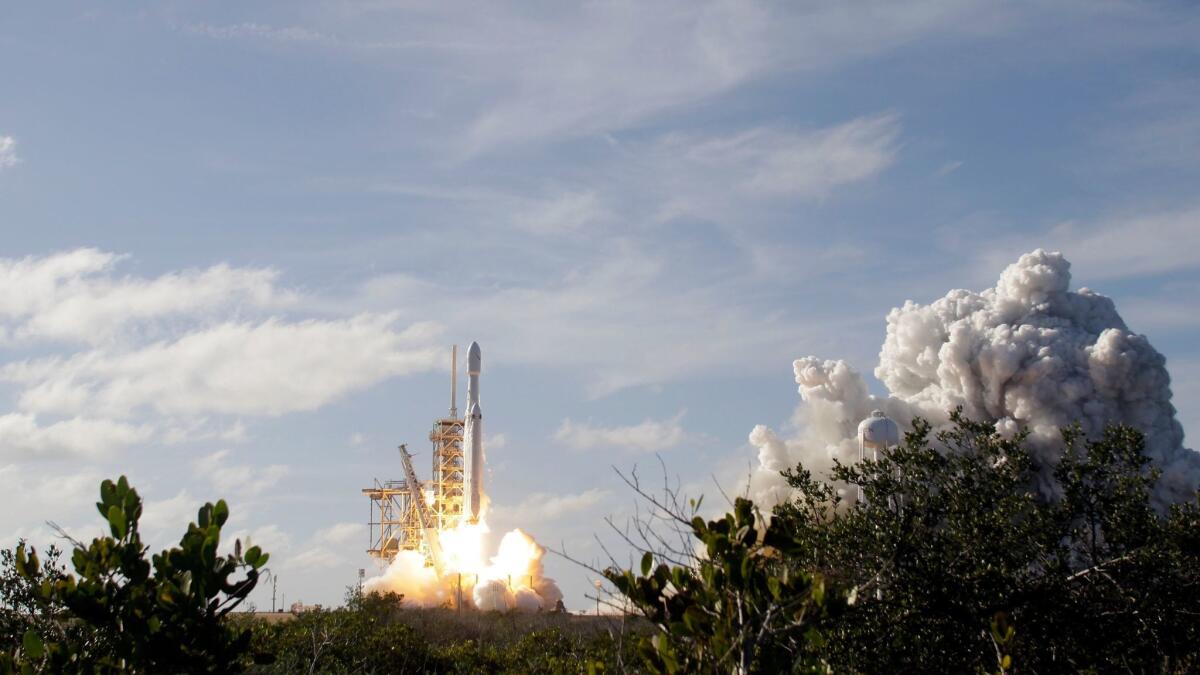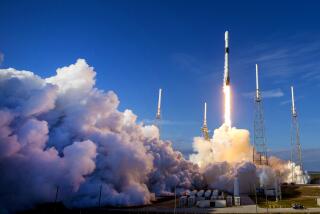SpaceX’s Falcon Heavy center booster lacked enough ignition fluid to light engines, land on platform, Musk says

The center core booster of SpaceX’s Falcon Heavy didn’t land on a floating sea platform as intended during last week’s first test flight because it ran out of ignition fluid, company Chief Executive Elon Musk said Monday.
Musk took to Twitter on Monday morning to give a few more updates on the Falcon Heavy’s first flight. After liftoff, the rocket’s two side boosters touched down simultaneously on land, eliciting cheers and applause from the crowd of SpaceX employees gathered in the company’s Hawthorne headquarters, as seen on the launch livestream.
Those two boosters, which were used in previous launches of SpaceX’s workhorse Falcon 9 rocket, will not be reused again, Musk said in a post-launch news conference last week.
But the center core booster ended up hitting the Atlantic Ocean at 300 mph and about 328 feet from the floating platform where it was supposed to land. Musk said Monday that there wasn’t enough ignition fluid to light the outer two engines of the booster “after several three engine relights.”
The fix, he said, was “pretty obvious.”
Musk also said a third floating platform, which the company calls a drone ship, is under construction to aid in first-stage recoveries for Falcon 9 and “dual ocean landings” for future Falcon Heavy side boosters. That platform will be located on the East Coast.
SpaceX already has one floating platform for the Atlantic Ocean and another for the Pacific Ocean.
Twitter: @smasunaga
More to Read
Inside the business of entertainment
The Wide Shot brings you news, analysis and insights on everything from streaming wars to production — and what it all means for the future.
You may occasionally receive promotional content from the Los Angeles Times.











